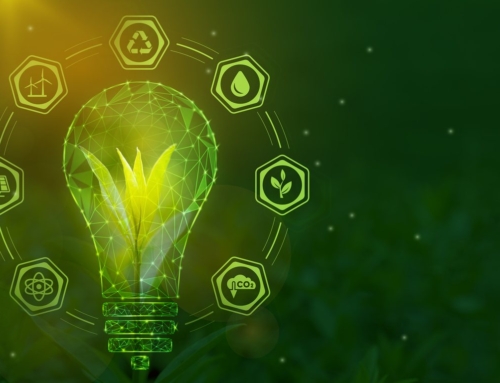The term “carbon-based life form” is more than just an overused sci-fi expression. Life on our planet would be impossible without carbon: it’s the basis for all human, plant, and animal life.
Developing sustainable CO2 concepts and renewable energy businesses, reducing CO2 emissions in an environmentally friendly way using renewable energy. and can limit climate change, climate, global warming
To sustain life on the planet, Earth’s carbon stores cannot remain stagnant. Through the steps of the carbon cycle, this element travels through the planet’s systems providing energy and fuel for healthy ecosystems around the globe.
Why is the carbon cycle important, and what does it entail? Read on to discover more about how the carbon cycle supports life as we know it—and why protecting it is crucial.
What Is the Carbon Cycle?
Carbon is always on the move. Put simply, the carbon cycle is the transfer of carbon atoms between different zones in, on, and around the planet. In other words, carbon atoms take a cyclical pathway through Earth’s systems, into the atmosphere, and back—over and over again.
The environment is one large, closed system. All its parts must work together and regulate as a whole to continue to support life. A healthy balance of carbon is crucial for both the atmosphere surrounding the planet and the life forms that call this planet home. To maintain this balance—and a healthy distribution of carbon—nature recycles all existing carbon atoms through each step of the carbon cycle.
Carbon is an essential building block of life on Earth. It’s released through human activity and natural processes alike. As carbon atoms are released, they make their way through the planet’s many environments, including the:
- Biosphere, or all Earth’s ecosystems
- Pedosphere, or the planet’s soil mantle
- Geosphere, or Earth’s rocks and minerals
- Hydrosphere, or the planet’s water bodies
- Atmosphere, or the gasses enveloping the globe
No matter where carbon atoms rest at any given time, these compounds work to support life, growth, and biological processes for living organisms everywhere.
What Are the Five Carbon Cycle Steps?
As it travels through the environment, these five steps of the carbon cycle ensure a healthy, equal distribution of this life-sustaining element:
1. Carbon enters the atmosphere via carbon dioxide.
Through breathing and other metabolic processes, humans and animals release carbon atoms into the atmosphere as carbon dioxide. Carbon atoms are also released through other human activities, such as burning fuels and composting.
2. Carbon dioxide is absorbed and used as energy.
Plants make use of airborne carbon atoms, absorbing them via photosynthesis. These atmospheric carbon compounds generate energy necessary for plants and other producer organisms to thrive.
3. Carbon compounds enter the food chain.
When carbon-containing plants are consumed, carbon atoms are absorbed by the humans and animals that eat them. As these atoms travel through the food chain, carnivorous and omnivorous animals get carbon from the animals they consume.
4. Carbon reenters the atmosphere via decomposition.
Now that carbon atoms are available again for organic absorption, the particles can travel through the air, into plants, and through the steps of the cycle indefinitely.
5. The carbon cycle repeats.
When plants and animals die, decomposition prompts the release of carbon into the air. Carbon atoms can also enter the planet’s bodies of water, soil reserves, and mineral deposits.
What Two Processes Fuel the Carbon Cycle?
Ultimately, the carbon cycle relies heavily on two natural mechanisms: photosynthesis and cellular respiration (also referred to as metabolism).
1. Photosynthesis
With photosynthesis, plants intake carbon dioxide to produce energy and maintain growth, emitting oxygen in the process.
2. Cellular Respiration
During cellular respiration, organisms use oxygen to convert food and water into energy, producing carbon dioxide as a result.
These two processes work in tandem to keep the natural carbon cycle going—and global reservoirs in balance.
Why Is the Carbon Cycle Important?
Without a healthy balance of carbon, there would be no viable life on the planet. Any imbalance in carbon levels would potentially render the earth inhospitable, and life as we know it would cease to exist.
The carbon cycle in the ocean is a critical component of the Earth’s carbon cycle, which describes the movement of carbon through various reservoirs on our planet. In the context of the ocean, it involves the exchange of carbon dioxide (CO2) and other carbon compounds between the atmosphere, the ocean surface, marine life, and the deep ocean.
Carbon is constantly in circulation and is neither created nor destroyed throughout the cycle. Too much carbon in any one area, however, puts the planet and its inhabitants at risk. Carbon dioxide levels must remain stable through each phase of the cycle to maintain an ideal global temperature—and plants and producer organisms can only absorb so much.
This imbalance has hazardous consequences. Too much carbon in the atmosphere can cause an increase in surface temperature, making it more difficult for the planet’s ecosystems to cool down.
Much like the inside of a greenhouse, high carbon dioxide levels function like gaseous insulation to trap heat that naturally radiates from the earth’s surface. Because that radiation has nowhere else to go, the planet heats up.
What Impact Do Humans Have on the Carbon Cycle?
Human intervention plays a crucial role in either supporting or disrupting the steps of the carbon cycle. Elevated levels in the atmosphere (or trapped in the planet’s other reservoirs) upset the planet’s equal balance of carbon. Unfortunately, because of human activity, carbon emissions are at an all-time high.
This increase in emissions is largely due to our use of fossil fuels for energy—and the removal of large forests that remove carbon from the atmosphere.
Carbon neutrality is a common goal among environmentalists. Achieving a carbon-neutral world would mean restoring a healthy balance between carbon stores and carbon emissions. Scientists are working hard to remove carbon from the atmosphere, and to protect the carbon cycle by fighting to preserve ecosystems that naturally manage excess carbon dioxide in the air.
To support healthy carbon levels, there are several things you can do to minimize your impact on the carbon cycle. Businesses and consumers can rethink their routines and make eco-friendly choices to:
- Walk, bike, or carpool
- Switch to solar-powered energy
- Use public transportation when possible
- Minimize air travel
- Cut down on household energy consumption
- Support movement toward low-carbon fuel sources
Save Energy to Minimize Your Environmental Impact
With a greater understanding of why the carbon cycle is important and the importance of human activity to protect its balance, you can take action to reduce your impact. Mindful energy consumption goes a long way in the fight against climate change, and Kiwi Energy offers innovative solutions and services to help.
Check out our energy plans to find other ways to save energy and protect the environment. Contact us today to learn more.






